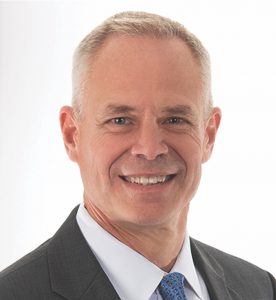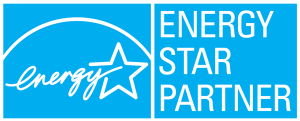Innovation and R&D: Operations
Southern Company Gas is undertaking a variety of projects aimed at improving how we operate effectively, efficiently and safely. Here are a few updates from our ongoing innovation work.
Partnering with leading industry organizations
Southern Company Gas and Southern Company are partnering with the Electric Power Research Institute, the Gas Technology Institute and many other utilities on the Low-Carbon Resource Initiative – a five-year initiative to evaluate and scale cutting-edge technologies that will advance the gas and energy utility sector toward meeting ambitious 2050 emissions goals.
Evolving leak-detection methods to enhance productivity
An important part of our approach to reducing emissions is using leak-detection technologies to mitigate the unplanned release of natural gas. Many currently available technologies are only effective within three feet of a gas leak and rely on surveyors traveling by foot while using a map to determine where gas pipes are.
We are looking at emerging scanning technologies that can be mounted to vehicles and can detect all gas leaks within 300 feet of the path of travel. Other technologies detect parts per million, while this detects down to the level of parts per billion–so we can differentiate between naturally occurring gas from agriculture or sewers and pipeline gas and deploy our resources more efficiently.
“One technology we already are using that could have expanded potential is ZEVAC equipment,” said Greg Corbett, Managing Director, Environment and Sustainability and chair of the Innovation Council’s Low-to no- Carbon Subcommittee. “This is a technology that will allow us to capture gas that escapes during controlled procedures like venting and flaring commonly associated with pipeline replacement or maintenance and repair operations.”
In addition to resources that can be used along gas distribution systems, Southern Company Gas is also helping to develop new technologies that can be deployed in homes and at other end-use locations.
We are working with NYSEARCH* on a unique project that will better detect fugitive methane leaks within structures. One of the biggest uncertainties is where to put these detectors to improve safety while avoiding false positives. This study is investigating gas dispersion inside a structure to identify the best locations for these detectors.
New leak-detection technologies will help reduce the emissions footprint of natural gas while bringing additional operational and safety benefits to our customers and employees.
* NYSEARCH is an organization of primarily gas distribution companies from around North America, along with other companies in the natural gas industry, that focuses on technology research and development. nysearch.org
Predictive analytics minimize our third-party damage rate
Because natural gas pipes are buried underground, they are at risk of being damaged during excavations. Third-party damages are those that result from individuals or organizations other than Southern Company Gas who accidentally damage our infrastructure during their excavation projects.
The number one risk to our distribution infrastructure is third-party damages. Even with the 8-1-1 underground infrastructure locator system, it’s something all gas companies need to address.
Not only are excavation damages a source of repair cost for Southern Company Gas, they also present a potential public safety concern. The potential magnitude is significant: across our operations, Southern Company Gas handles over 2 million excavation tickets each year, each posing an excavation damage threat. Excavation damages also occur from digs without accompanying 8-1-1 tickets.
To reduce these damages, in 2018 we partnered with predictive analytics firm Urbint.
The Urbint Damage Prevention Project
The goal of the Urbint project is to use machine learning to reduce our damage rate without increasing the number of damage prevention resources.
Urbint uses Artificial Intelligence machine learning to create a digital version of physical infrastructure and accounts for environmental risk factors that can contribute to damage–like weather, time of day, topography and excavation types.
“By predicting which tickets are high-risk, we are able to take preemptive action by reaching out to those projects,” said Emeka Igwilo, Chief Data Officer and Vice President Operations Support. “We have successfully driven down excavation damages by over 30% in selected service areas, increasing efficiency.”
“When the COVID-19 pandemic hit, we further built upon our work with Urbint to identify and prioritize at-risk sites near hospitals, nursing homes and other critical facilities and deploy additional resources to ensure safe continuity of service in those areas,” Igwilo added.
“Ultimately, this model helped Southern Company Gas identify and prioritize the 1% of tickets that have historically contributed to approximately 40% to 50% of damages. It also helped identify locations where it is more common for ‘no calls’ to result in damages (from an excavator failing to call 8-1-1 before starting the digging project), so we could better target our communications.”
—Emeka Igwilo
Chief Data Officer and Vice President Operations Support
Southern Company Gas
Chattanooga Gas achieves successful reductions in third-party damages
Analytics from the Urbint Damage Prevention Project were applied to a residential public awareness campaign in our Chattanooga Gas territory in 2019.
Data was used to target residential neighborhoods with a high predictability rate for damages and share educational information about how to work safely around natural gas lines. The campaign netted a 45% month-over-month increase in 8-1-1 locator calls and a 47% reduction in damages in the first month, and the overall campaign resulted in a 10% improvement in the damage ratio metric used to calculate success. Tennessee regulators asked Chattanooga Gas to share the project as a model for other energy companies across the state and beyond.
We are fostering innovation to drive sustainability results
In 2019, Southern Company Gas founded its Innovation Council, an internal group of employees focused on fostering an innovative mindset throughout our workforce.
The council is broken into four subcommittees: operations & safety, market, customer experience and environmental. The council harvests ideas from all corners of the organization for consideration.
The goal of the council is to break down organizational barriers by fostering an innovative mindset and creating avenues for ideas to succeed.
Effective innovation, however, cannot just focus on theoretical ideas; it must also be pragmatic and drive immediate changes that help the business, better serve customers and improve environmental performance. To this end, Southern Company Gas rolled out its new innovative social media application–named FUEL–to further open lines of communication. The application enables employees to identify job-related improvement opportunities and share best practices with each other.
“Our mindset around innovation is to be very proactive in our drive to reach our emissions reduction goals. We have a real passion for innovation. We’ve engaged with field personnel, operations teams and others throughout our organization to identify pain points and places we can be better. Our workers have really gone above and beyond by not just identifying problems but suggesting solutions.”
—Zachary Lowe
Director of Pipeline Safety Management and R&D Program Manager
Southern Company Gas
![]()
![]()

Nicor Gas supports entrepreneurs making a positive environmental impact through the Clean Energy Trust
Southern Company Gas subsidiary Nicor Gas has been a long-time supporter of the Midwest’s clean technology innovation ecosystem through its partnership with the Clean Energy Trust. The organization supports the scouting, funding and mentoring of startups in the clean energy space that are developing not only technologies that improve the natural gas industry, but also a variety of technologies that create options to solve Illinois’ biggest energy challenges.
As a sponsor of the Clean Energy Trust’s Diversity, Equity and Inclusion initiative, Nicor Gas furthers a commitment to invest in clean technologies while advancing diverse businesses, creating jobs in the clean energy industry and supporting underserved communities.
Together with the Clean Energy Trust, Nicor Gas launched the Nicor Gas Multicultural Innovator Award–a $50,000 investment in the development of an Illinois-based clean energy technology startup with a minority founder or CEO.
“Diversity, innovation and ingenuity can help accelerate the transition to a clean energy economy,” said John O. Hudson III, president and CEO of Nicor Gas. “The Nicor Gas Multicultural Innovator Award is part of our ongoing commitment to grow economic opportunity in underserved communities and communities of color.”
In addition to a grant, recipients of the award will receive 12 months of business mentorship and heightened exposure to investors and customers. Entrepreneurs and businesses making a positive environmental impact throughout the state will be considered.
Small Illinois businesses, or those with a substantial presence in the state, with a focus on renewable energy, energy efficiency, smart buildings and cities, energy storage, water, ag-tech, digital solutions for operational efficiencies, reduced maintenance costs, customer engagement and/or worker training and management may be eligible to apply for the award. Other company criteria include:
- Founder or CEO who identifies as Black, Indigenous and/or person of color.
- Two to 12 full-time employees.
- No more than $3 million in funding raised; must be able to demonstrate at least three to six months of funding runway.
- Can be product- or service-based; does not need to be market-ready, but is preferred.
The application period for the Nicor Gas Multicultural Innovator Award closed on March 12, 2021. Sixteen companies meeting the eligibility criteria applied. The Clean Energy Trust will conduct due diligence on the companies to recommend finalists for Nicor Gas’ review and selection of the award recipient.














